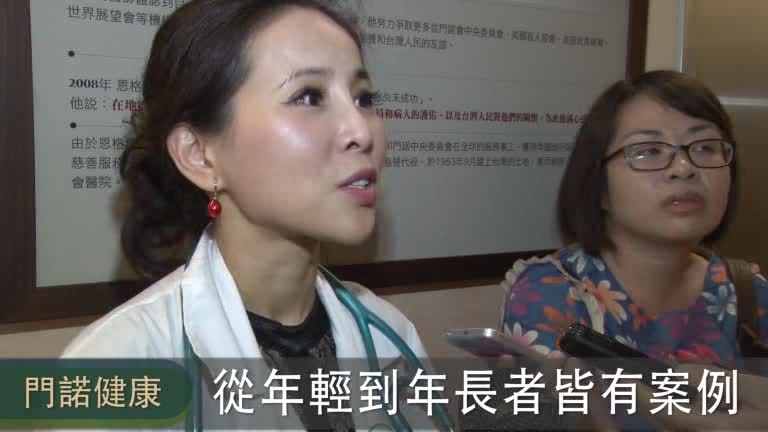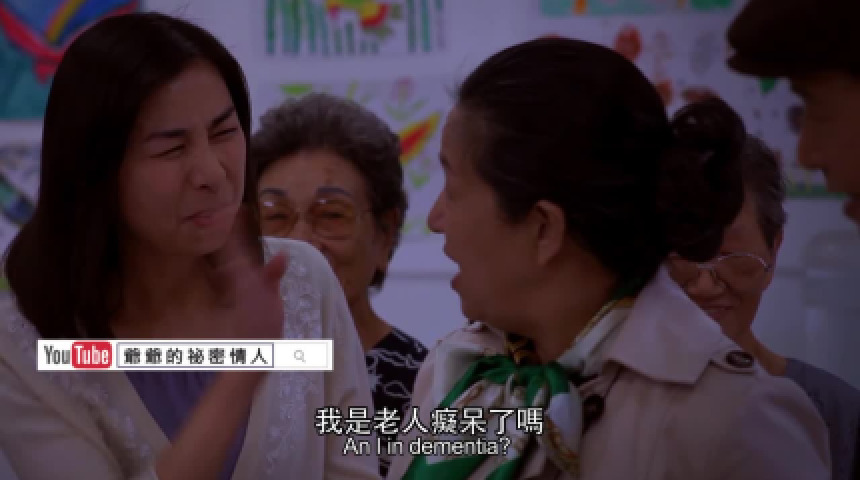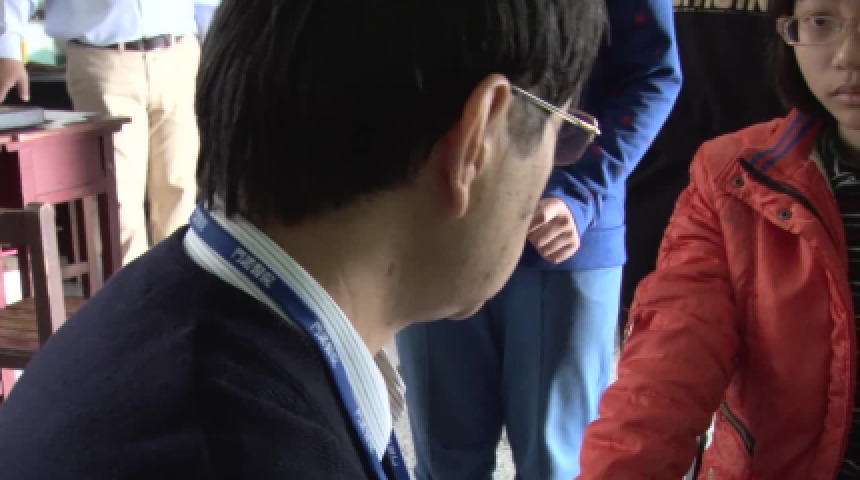花東微觀血管治療向前行!

This is a modal window.
新聞編採:

新聞翻譯:Angela Hsieh
配音旁白:羅綺梅
Endovascular intervention/ treatment making forward progress in the Hualien & Taitung area!
花蓮地區是僅次於雲嘉地區人口老化的縣市,伴隨這樣的人口結構而來的就是心血管疾病的出現,近10年台灣人口結構的老化已經不是一個新的新聞了,在人口結構裡面,愈老化的族群,他們所生的疾病跟青壯年又不一樣。門諾心臟內科醫師吳靜芬表示,第一名的健康殺手就是癌症,第二名的就是心血管疾病,而在已開發國家中,心血管疾病其實已經超過腫瘤成為第一名的健康殺手了。在東部花蓮的部分,醫師也發現有很多心血管患者是沒有被有效的注意、被診斷、被治療的,所以在花東地區積極的介入心血管照顧的部分,對花東地區的民眾確實是有必要的!這次醫師與心臟科團隊也把「微觀血管治療」的新思維帶來花東,期待成為花東地區在心血管治療的幫助,更衷心希望大家都能有一顆好「心」情。
Hualien area has the second most elderly population by county, behind only the Yun-Lin and Chiayi area. This type of demographic structure has brought higher prevalence of cardiovascular disease (CVD). The aging population structure of Taiwan has not been news for the last decade. In a demographic structure, the older age groups suffer different diseases from the young adults. Cardiologist Dr. Ching-Fen Wu at Mennonite Christian Hospital said that the top health killer is cancer, and the second one is CVD. However, in developed countries, CVD actually has gone beyond cancer to be the No.1 health killer. In the eastern Hualien area, doctors also find there are many CVD patients that have not been noticed, diagnosed, and treated effectively. Therefore, in the Hualien and Taitung area, actively rolling out CVD care is very necessary for people that live in the Hualien and Taitung area! This time, doctors and cardiology teams are also bringing the new concept of "endovascular intervention/ treatment" into Hualien and Taitung area. Hopefully, it can help solve the CVD issues in the Hualien and Taitung area. Moreover, we sincerely hope everyone can take cheer from this good news.

↑心導管團隊正在為病人作心導管治療(照片提供:門諾恩格爾醫師紀念心導管中心)
↑The cardiac cath. team is carrying out interventional cardiac catheterization for a patient. (Photo: Dr. Harold H. Engle Memorial Cardiac Catheterization Center, Mennonite Christian Hospital)
從34歲-103歲
From age of 34 to 103
門諾心臟科團隊過去治療過最年輕的心血管個案患者是34歲,而最年長的已高齡103歲,這中間的年齡差距確實令人驚訝。心臟科醫師吳靜芬說,只是要是生活習慣不好、高度壓力以及三高(高血糖、高血壓、高血脂)的朋友,不管是年輕人或是長者族群都有可能會受到心血管疾病的威脅!其實以現在的社會生活型態來看,這個影響範圍確實也是非常廣泛的!門諾心導管中心自102年開始服務至今,已經累積超過1000例以上的治療個案,也顯示花東地區在心血管治療上確實有必要性與急迫性。
Mennonite Hospital's cardiology team has treated patients as young as 34, but the oldest was already at the age of 103. The gap between the ages is truly surprising. Cardiologist Dr. Ching-Fen Wu said: as long as people have bad life habits, high stress, and "three-high" syndromes (hyperglycaemia, hypertension, hyperlipoidemia), no matter whether they are in the young or elderly groups, all can be threaten by CVD! Actually, based on the life style in current society, this is indeed a very wide range of impact! Cardiac Catheterization Center in Mennonite Hospital started its service in 2013. To date, more than 1,000 cases have been treated, which also demonstrates the necessity and urgency of CVD treatments in the Hualien and Taitung area.

↑心臟內科吳靜芬醫師,與丈夫從台北來到花蓮一起投入東部的醫療服務,她說後山醫療雖然還需要更多的專業進場護盤,但其實更需要的還是工作團隊夥伴的協助,因為心臟救心的工作必須要一群人來幫忙。(照片提供:門諾醫院)
↑Cardiologist Dr. Ching-Fen Wu, together with her husband, moved to Hualien from Taipei and jointly engaged in medical services in the east of Taiwan. She said that the health care in the poor mountain areas still needs more professionals' involvement in and support. Yet, the more important need is still for collaboration between team members, because working on saving cardiac patients requires the support of a large number of people. (Photo: Mennonite Christian Hospital)
過去因東部醫療資源不足,花東地區的心血管病患在地就醫困難,造成患者無奈被迫忍受身體的不適,延後早期治療的黃金期;不然就是得需耗費更多成本與不便到外地就醫,然而這些選擇對病人或家屬來說都不僅費時耗工,也增加許多對病情不利的因素。
In the past, because of the scarcity of medical resources in eastern region, it was difficult for CVD patients to receive medical treatments locally in the Hualien and Taitung area. Consequently, patients were forced to tolerate physical ailments and pass up the window of opportunity for early treatment. Or they had to seek medical treatment out of town, which resulted in more expenses and inconveniences. For both patients and their families, those choices were not only time- and labor- consuming, but also increased more unfavorable factors to their illness.

↑心導管團隊正在進行前置作業,心導管作業至少需要四名以上的工作人員,團隊專業包括護理師,放射師,以及主治醫師的無間合作。(照片提供:門諾恩格爾醫師紀念心導管中心)
↑The cardiac cath. team is performing the preparation work. At least 4 medical staff members are needed to carry out the cardiac catheterization. The professional team includes seamless cooperation between registered nurse(s), radiologist(s), and attending physician(s). (Photo: Dr. Harold H. Engle Memorial Cardiac Catheterization Center, Mennonite Christian Hospital)

↑心導管團隊正在進行前置作業,進台前,醫師也必須依照規定全副武裝,並做好萬全的隔離與感控防護,讓患者的治療可以安全無虞。(照片提供:門諾恩格爾醫師紀念心導管中心)
↑The cardiac cath. team is performing the preparation work. Before entering the cardiac catheterization laboratory (Cath. Lab.), the doctor also must be fully outfitted per requirements and ensure all complete infection control and quarantine measures are in place, so that the treatment for patient will be safe and secure. (Photo: Dr. Harold H. Engle Memorial Cardiac Catheterization Center, Mennonite Christian Hospital)
微觀血管治療的思維與意義
The Concept and Meaning of Endovascular intervention/ treatment
所謂的「微觀血管治療」,我們可以把它看成是一種新觀念,但也可以是一種新的醫療輔助技術!其實心導管用於心血管治療已經行之有年了(至少三十年以上)。吳靜芬醫師說,透過微觀血管治療,我們可以得到血管的完整「型態」以及「功能」的評估資訊,這必須使用「血管超音波」來達成,所謂的「微觀」就是指血管內部病灶的狀況,而不是只注重血管外部的「型態」,而是要一併注重血管「功能性」需要補強的地方!這也顯示過去傳統的血管照影技術所提供的資訊確實是不足的,在醫療資源普遍不足的花東地區,有一個微觀治療的資源對民眾來說也是很有便利性的。醫師也提到一個重點,透過微觀血管治療的另一個用處,是可以有充分的資訊來評估是否在心血管中進行相關的輔助治療(例如裝心臟支架或氣球等等),因為有時候裝心臟支架可能只是畫蛇添足,甚至浪費寶貴的醫療資源。
For "Endovascular intervention/ treatment", we can take it as a new concept, but it is also a new type of medical auxiliary technology! Actually, cardiac catheterization has been performed as CVD treatment for many years (at least 30 years or more). Dr. Ching-Fen Wu said, through endovascular intervention/ treatment, we can obtain comprehensive assessment of "state" and "function" related to the blood vessel. This must be achieved through "vascular ultrasound". As for "endo-", it means the internal lesion status of the blood vessel, and does not just focus on the external blood vessel "state", but to focus also on where blood vessel "functionality" needs to be reinforced.
This also shows that the information provided by the traditional coronary angiography in the past was actually insufficient. In Hualien and Taitung area where the medical resources are generally lacking, it will be much more convenient for people to have access to endovascular intervention related resources. The doctor also mentioned a key point: the other advantage of endovascular intervention/ treatment is to provide sufficient information to evaluate whether to apply cardiovascular auxiliary therapy (e.g. cardiac stent or balloon, and etc.). The reason is that sometimes placing the stent might be deleterious, or even a waste of precious medical resources.

↑心導管團隊正在為病人作心導管治療(照片提供:門諾恩格爾醫師紀念心導管中心)
↑The cardiac cath. team is performing interventional cardiac catheterization for a patient. (Photo: Dr. Harold H. Engle Memorial Cardiac Catheterization Center, Mennonite Christian Hospital)
搶心救心的「door-to-balloon time」
“Door-to-balloon time” - race to save the heart
我們最常聽見的心血管疾病就是「心肌梗塞」,其實在心導管技術在心血管疾病的治療中,最立竿見影的就是「急性心肌梗塞」以及「急性心臟衰竭」的這兩種急症的介入性治療,因為心臟是一個非常耗氧的器官,他需要源源不絕的血液供應,一但血液的供應被阻斷,心臟在三十分鐘內就會開始壞死梗塞,心臟功能就完全失去!心臟功能的再生能力也是相當差的,所以心血管治療就是要在最有限的時間立即性的搶救心臟的功能!因此在緊急心導管手術中有所謂的「door-to-balloon time」的一般原則,也就是從病人進入醫院到血管被氣球擴張讓血液再灌注的時間,要求必須在90分鐘以內完成(門諾醫院目前的平均時間是在60分鐘以內),不管如何主要就是希望心臟缺氧的時間不要太久,這也是相對於開刀來說,比較不費時也較低風險的治療方式。
The most common CVD we hear about is "myocardial infarction (MI)". Actually, among the CVD treatments involving cardiac catheterization, the invasive treatment that sees the fastest result involves acute syndromes for "acute myocardial infarction (AMI)" and "acute heart failure (AHF)". Because the heart is a high oxygen consumption organ, it needs a continuous blood supply. Ones the blood supply is interrupted, the heart will start necrosis and infarction within 30 minutes and lose its function completely! The regenerative capability of cardiac function is quite poor, so the CVD treatment must immediately restore the cardiac function within a limited time! Therefore, there is a general principle so-called "door-to-balloon time" for the emergency cardiac catheterization procedure. It means that the time from a patient enters the hospital to the vessel dilated by the balloon to allowing blood reperfusion should be completed within 90 minutes (The average time is less than 60 minutes currently in Mennonite Christian Hospital). No matter what, the main goal is to minimize the cardiac hypoxia time. This treatment also requires less time and posses lower risk comparing to a surgical operation.

↑心導管進行中,心導管台外的護理人員也是戰戰兢兢,必須監控患者的生命跡象,做好萬全準備,與台內的醫師與專業人員密切合作。(照片提供:門諾恩格爾醫師紀念心導管中心)
↑During cardiac catheterization procedure, the nurses outside the Cath. Lab. are also cautious and must monitor patient vital signs, be fully prepared and work closely with physicians and professionals in the Lab.. (Photo: Dr. Harold H. Engle Memorial Cardiac Catheterization Center, Mennonite Christian Hospital)
心導管治療應用廣泛而成熟,花東民眾可放心
Interventional Cardiac Catheterization is widely used and mature. People residing in Hualien and Taitung County can rest assured
門諾醫院吳靜芬醫師說,心導管技術已經有三十年以上的成熟期,廣泛應用於心血管治療。在心導管的療程中患者是不需要全身麻醉的,只需要一個微小的打針處,通常是從右側的橈靜脈或是右大腿的股動脈進入,打針後會有一個軟管進入血管,就像打點滴的軟管,我們從這些軟管中伸入一些導線,氣球或支架,因為血管本身就是一個空腔,所以基本上病人是不太會有痛楚的,用微創的方式直接對心血管作介入性的檢查跟治療,傷口與風險都小,這些都有助於預後的治療與生活品質的提升,而且這個技術已經非常地成熟。
Mennonite Christian Hospital's Dr. Ching-Fen Wu said, cardiac catheterization is a mature technology with more than 3 decades of history, which has been widely used in CVD treatment. During the cardiac catheterization process, the patient doesn't need to undergo general anesthesia, but only needs a tiny injection point, usually from the right radial vein or the femoral artery on the right thigh. After the injection, a tube will be inserted into the blood vessel, just like the tube for intravenous drip. We will insert a wire, balloon or stent through the tube. Because the blood vessel itself is basically a tube, the patient hardly feels any pain. With minimally invasive method for intervention check and treatment of the cardiovascular system, results in only small wound and low risk, which can help improve prognostic treatment and quality of life. Meanwhile, this technology is already very mature.

↑門諾恩格爾醫師紀念心導管中心。(照片提供:門諾恩格爾醫師紀念心導管中心)
↑Dr. Harold H. Engle Memorial Cardiac Catheterization Center of Mennonite Christian Hospital (Photo: Dr. Harold H. Engle Memorial Cardiac Catheterization Center, Mennonite Christian Hospital)
紀念恩格爾醫師(Dr. Harold H. Engle)
To commemorate Dr. Harold H. Engle
影片中門諾醫院的「恩格爾醫師紀念心導管中心」揭幕啟用於2014年5月27,開始提供花東民眾相關的醫療服務,特以紀念當年恩格爾醫師對花東偏鄉公衛醫療的奉獻而命名,恩格爾醫師於2013年年底於美國辭世。
The "Dr. Harold H. Engle Memorial Cardiac Catheterization Center" of Mennonite Christian Hospital in the video opened on 27 May, 2014, began providing related medical services for people in the Hualien and Taitung area. The name is to commemorate Dr. Harold H. Engle for his dedication into the rural areas in the Hualien and Taitung area during those earlier years. Dr. Harold H. Engle passed away in the U.S.A. at the end of 2013.

↑照片最右邊手執X光片者即為恩格爾醫師。(照片提供:花蓮門諾醫院)
↑Dr. Harold H. Engle is the one at the right side with X-ray in hand. (Photo: Hualien Mennonite Christian Hospital)
關於門諾恩格爾紀念心導管室的成立:可以從認識這位恩格爾(Dr. Harold H. Engle)醫師開始。門諾醫院吳鏘亮院長受訪時表示,恩格爾醫師對於花蓮人來說其實應該算是蠻陌生的!因為他來到花蓮服務只有短短兩年的時間(1951-1952年之間。)但是若沒有恩格爾醫師的到來,就不會有創院院長薄柔纜醫師來到花蓮,更不會有門諾醫院之後的開創與服務,相對的在花蓮的公衛醫療的開展上必定會有一個很大的缺憾。恩格爾醫師原本就有到偏鄉行醫的熱情與感動,當時受到門諾會中央委員會(MCC)的指派來到花蓮,當時花蓮並沒有醫院或診所,只有宣教士所組成的巡迴醫療隊,在走遍偏鄉部落的兩年後他回到了美國,他如實的把這兩年的所見所聞,向當時的美國軍事委員會報告,就因為他的這份報告,讓美國國會決定把台灣視為海外替代役服務的地點之一。因此在1954年,門諾醫院的創院院長薄柔纜醫師就來到了台灣花蓮,他就是第一屆的海外醫療替代役醫師!門諾醫院後續的服務開拓,恩格爾醫師的影響至為重要!恩格爾醫師於2013年年底回歸主懷,但是他對花蓮醫療公衛的奉獻會一直記錄在這最重要的起始點!
Regarding the establishment of Dr. Harold H. Engle Memorial Cardiac Catheterization Center: one can start by learning about Dr. Harold H. Engle. During the interview with the Mennonite Christian Hospital’s Superintendent Dr. Chiang-Liang Wu, M.D, he said that for Hualien people, Dr. Harold H. Engle may be considered very unknown, because he came to serve in Hualien for a very short time, only for 2 years (between 1951 - 1952)! However, if Dr. Harold H. Engle did not come, Dr. Roland P. Brown, the Mennonite Hospital's founding superintendent would not have come to Hualien, and there would be no founding of Mennonite Christian Hospital and subsequent services, that would have meant a huge shortfall in terms of public health & medicine in Hualien.
Dr. Harold H. Engle has always been passionate and motivated about practicing medicine in rural area. At that time, he was appointed by Mennonite Central Committee (MCC) to come to Hualien. There was no hospital or clinics in Hualien, only mobile clinic team composed of missionaries. After visiting clans and villages in rural areas for 2 years, he went back to the United States and report truthfully what he had seen and heard in these 2 years to the US Armed Service Committee at that time. Due to his report, the United States Congress decided to make Taiwan as one of the places for overseas medical support. Therefore, in 1954, The Mennonite Hospital's founding superintendent Dr. Roland P. Brown came to Hualien, Taiwan. He was among the first wave of doctors to practice overseas in lieu of service! Dr. Harold H. Engle's influence is extremely important for the subsequent expansion of services at the Mennonite Christian Hospital! Dr. Harold H. Engle went to the Lord's embrace in 2013, but his contributions toward public health & medicine in the Hualien area will always be remembered at this most important starting point!
(Author & Video Editor: Tung-Jung Huang / Photographer & interview: Chi-Mei Luo, Photo: Mennonite Hospital/ Dr. Harold H. Engle Memorial Cardiac Catheterization Center)
花東微觀血管治療向前行!/新聞編輯採訪:

關於Mch Public:門諾公益的編輯採訪群來自各種領域,包括醫管、電視媒體、平面媒體、出版編輯、社會工作、非營利組織的勸募工作者,大家抱持著對公益以及對偏鄉關懷的熱情,跳脫主流商業媒體的觀察,以公共議題為出發點,帶來更為深入的報導取向,讓許多無法被媒體關注的事件,從這個地方儘量的再現報導的真實,我們知道這裡的製作呈現無法追上主流媒體的豐富與精美,但我們會盡其所能,讓小角落的光傳遞的更遠,更深邃。有任何的建議或指教,請留言或寄到nanystudio@gmail.com感謝您的關注。





回應文章建議規則: